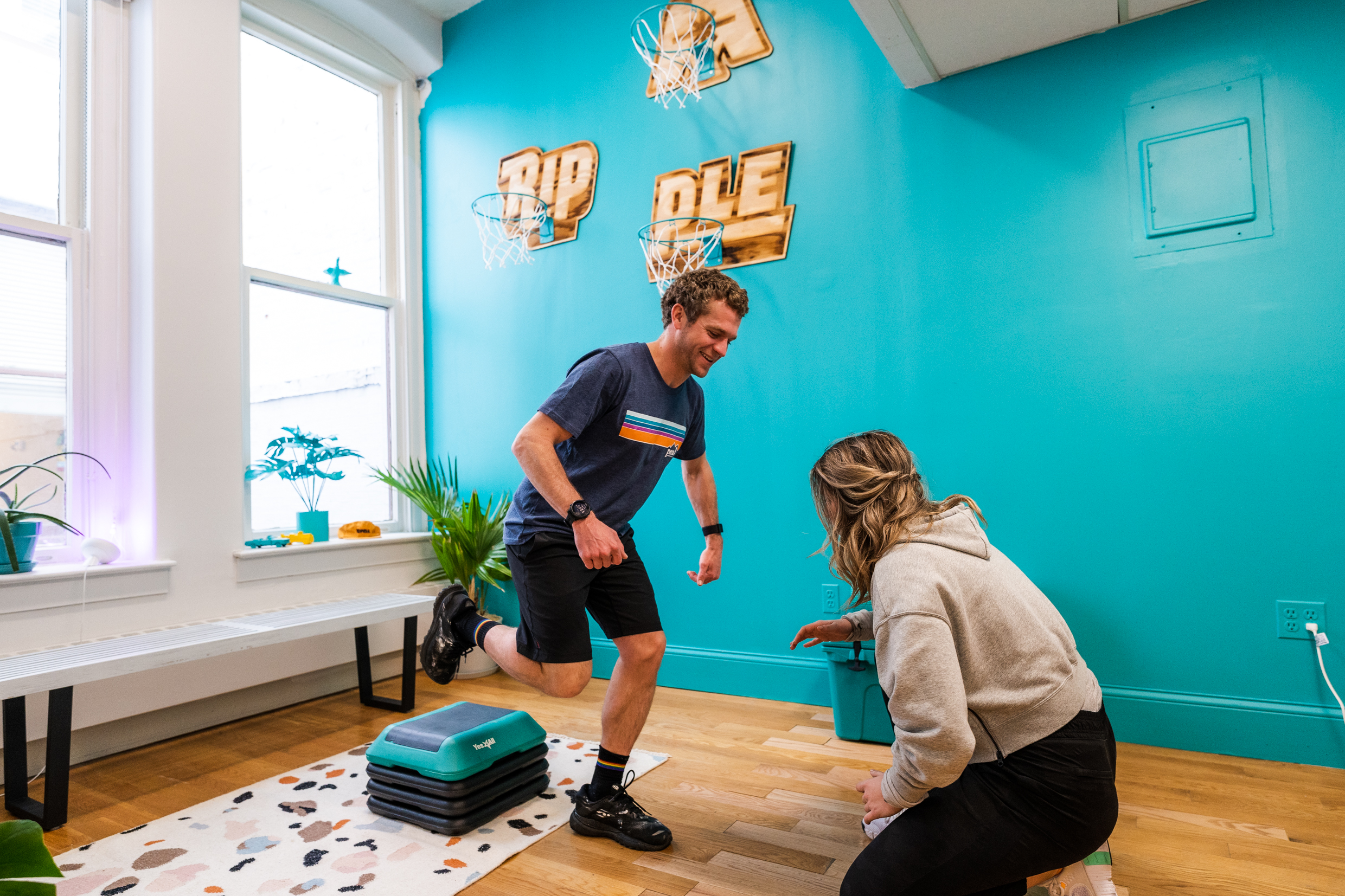Power Training for Golfers: Build Distance Without Losing Control

It’s no secret that most golfers want to hit the ball farther. Longer drives can lead to shorter approach shots and more birdie opportunities. But distance without control often does more harm than good. When golfers chase power without a plan, they typically end up sacrificing accuracy—and sometimes, even their health.
Overswinging or muscling the ball can lead to poor sequencing, timing issues, and inconsistent contact. It also increases the risk of injury, particularly to the lower back, shoulders, and wrists. The key is building controlled power—where speed, mechanics, and stability all work together to produce repeatable, efficient force. The goal isn’t just to hit farther—it’s to hit farther while staying in play.
READ: How Ripple PT Helps Runners Return to the Pavement After Injury
Understanding Golf Power vs. Strength
There’s an important distinction between raw strength and functional power in golf. Strength refers to how much force your muscles can produce, while power is about how quickly you can produce that force within a specific movement. In golf, that movement is rotational and fast, involving the entire kinetic chain—from your feet to your fingertips.
Effective golf power training goes beyond lifting heavy weights. It focuses on optimizing how force is generated through the ground, transferred through the hips and torso, and released through the arms and club. Sequencing is everything. You can be strong in the gym, but if your movement pattern is inefficient, it won’t translate to the course.
The Role of Golf Physical Therapy in Power Development
Golf physical therapy plays a vital role in helping you build power safely and effectively. At Ripple in Boston, we use movement assessments—such as those developed by the Titleist Performance Institute (TPI)—to evaluate how your body moves during golf-specific tasks. We look for mobility restrictions, strength asymmetries, and stability deficits that may be holding back your power potential.
Once we identify key limitations, we build a personalized plan to improve your swing efficiency and physical output. This often includes training the muscles that drive rotational force, improving how your body loads and unloads energy, and enhancing your balance and postural control throughout the swing. The result is more distance without losing control—and without putting your joints at risk.
Sample Power-Focused Movements for Golfers
Effective power training for golf doesn’t mean doing Olympic lifts or max-effort squats. It means incorporating movements that build explosive force, reinforce swing mechanics, and enhance body control. Here are a few exercises we often use with clients:
Medicine Ball Rotational Throws
These mimic the explosive rotational demands of the golf swing. They help develop speed and coordination through the core, hips, and shoulders.
Cable-Resisted Swings
Using resistance to simulate the swing path strengthens the exact muscles and movement patterns used in your golf game. It also improves sequencing and force control.
Explosive Step-Ups
This single-leg movement enhances lower-body power and stability, which are crucial for ground force production in the swing.
Anti-Rotation Core Work
Exercises like Pallof presses or banded holds train your core to resist unwanted motion—helping you stay stable through your backswing and follow-through.
All of these exercises are scalable and tailored to the individual golfer. You don’t need to train like a pro—you just need to train like your body plays the game.
READ: How Physical Therapy Can Help Runners Overcome Knee Pain
Training Smarter, Not Just Harder
One of the biggest mistakes golfers make when training for power is skipping the essentials: recovery, mobility, and movement quality. Power training is taxing on the nervous system and joints. Without the right recovery strategies, gains plateau—and the risk of injury rises.
Mobility is equally important. You can’t rotate explosively if your thoracic spine, hips, or shoulders are restricted. That’s why golf physical therapy blends power development with mobility work and corrective exercises. It ensures your body can move freely and efficiently, without compensations that could throw off your swing.
If you're unsure whether your current training plan is helping or hurting your game, it may be time to work with a specialist. At Ripple in Boston, we help golfers identify their limitations, build controlled power, and protect their bodies for long-term performance. Whether you're just starting to train for distance or looking to take your swing to the next level, we’re here to support you with data-driven, golf-specific solutions.



